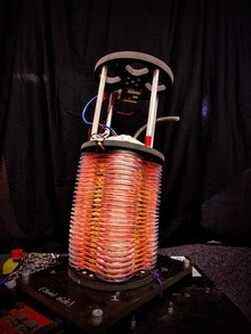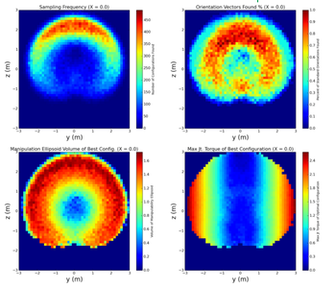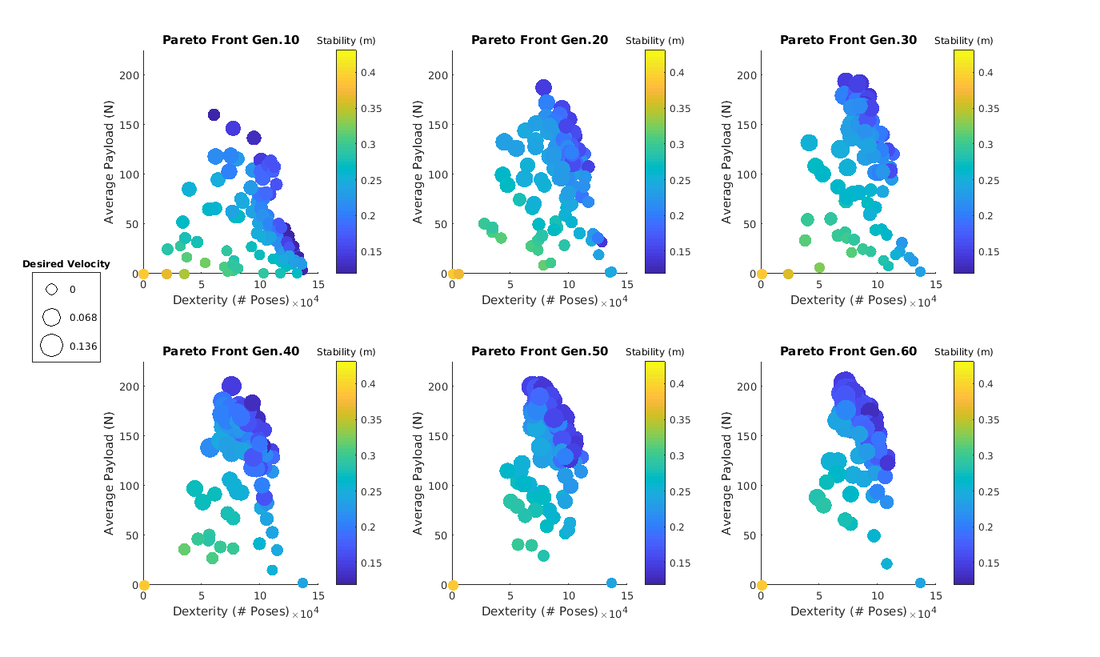Kinematic Parameter Optimization
Simultaneous Structure - Actuator OptimizationAnother active project aims to find strategies for jointly optimizing kinematic design and actuator choice. Traditionally, optimization techniques for robots have been used to make fine adjustments of the lengths or orientations of structural members after the general structure of the robot arm (including the choice of motors or actuators) has been decided on by human designers. However, appropriate design metrics should make it possible to include more fundamental aspects of the robot design, such as the size and type of actuator, in the optimization.
Accomplishing this requires the development of both kino-dynamic metrics (performance metrics which consider both the kinematic structure of the robot and the dynamic characteristics) and tractable discrete optimization algorithms that can consider both continuous design variables like link length or angle, and discrete design variables like a choice between 3 viable electric motors. |
Multi-objective optimization produces a range of optimal designs known as a Pareto Front, which represents the trade-offs between different optimization objectives.
|







